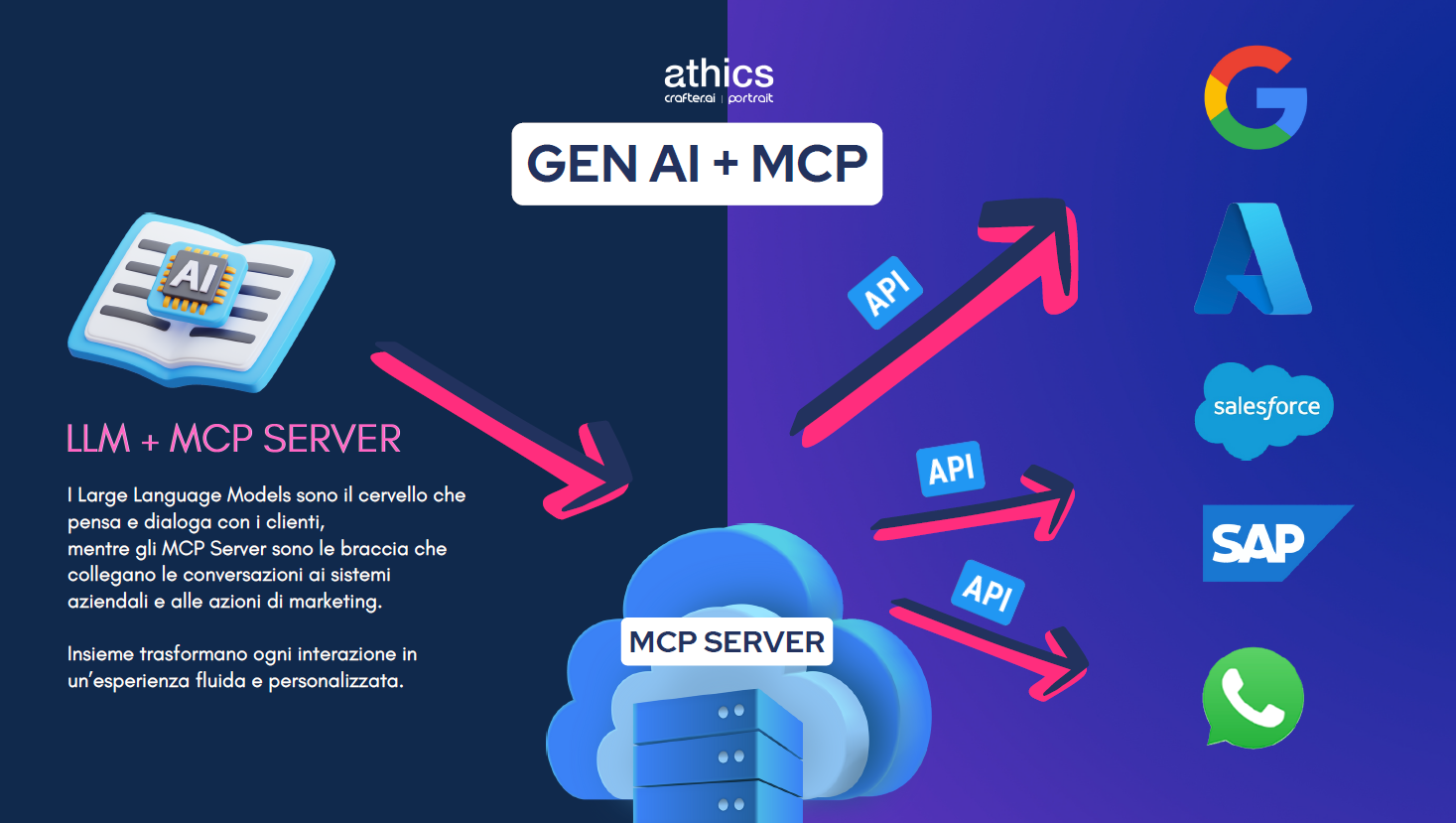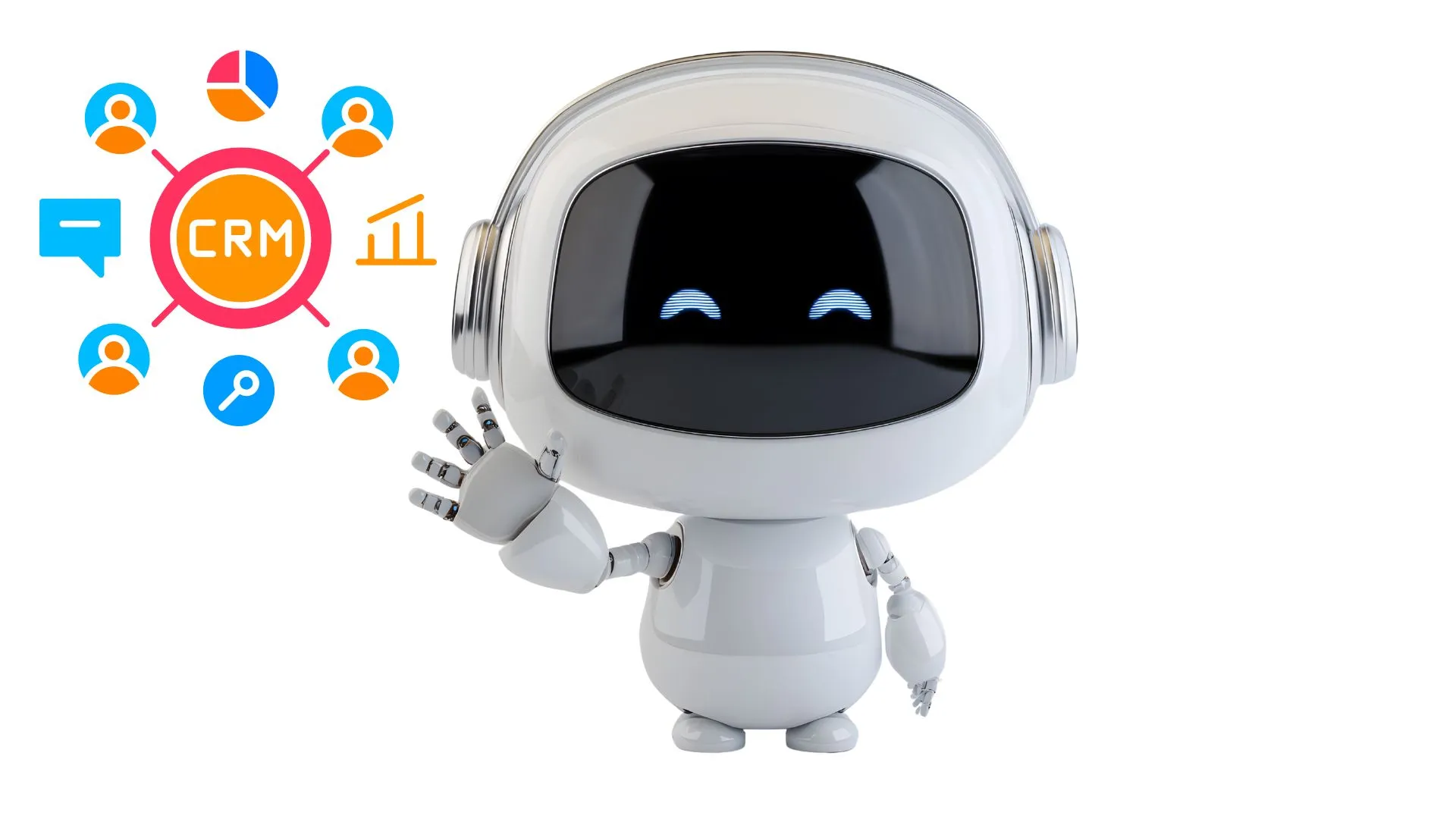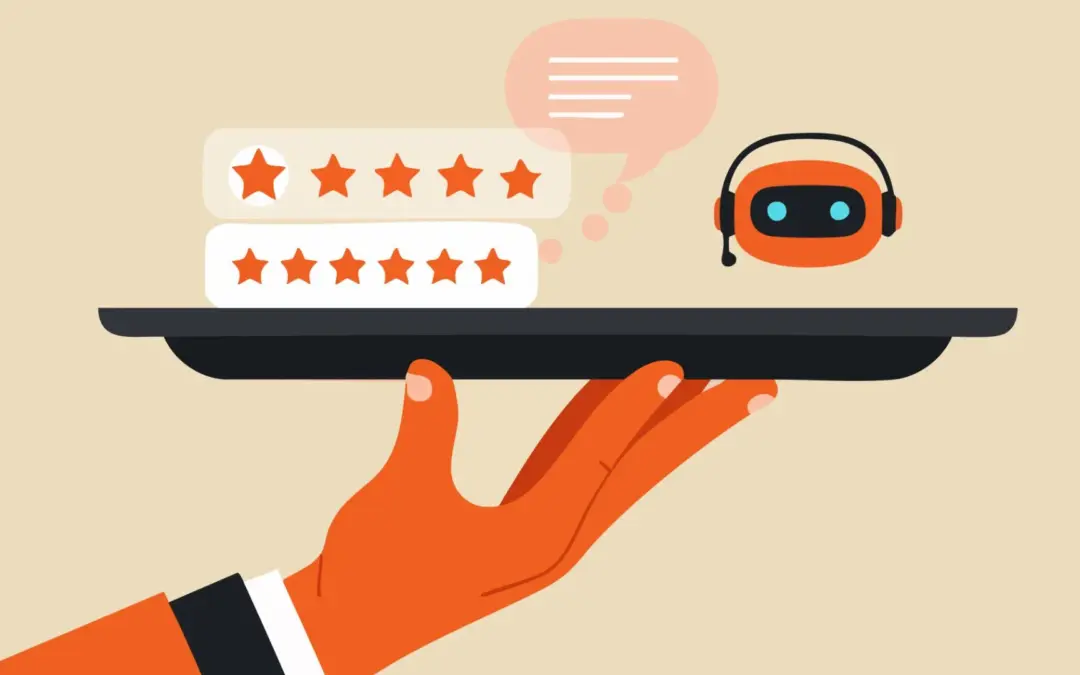What is the MCP Server Protocol? Imagine an extraordinary brain, capable of understanding human language, complex reasoning, and proposing intelligent solutions.
This brain is the Large Language Model (LLM)—the soul of the chatbots and AI assistants we know today. But as powerful as they were, there was always a limitation: these digital brains had no arms.
They could think, but not act.
This is where MCP servers come in, the technology that finally allows LLMs to “move through the world.”
If the language model represents the brain, the MCP server is the body that allows it to interact with the outside world: access databases, query a CRM, read a document, or send an action to a business system.
In other words, MCP (Model Context Protocol) servers transform intelligence into operational capability.
Estimated reading time: 7 minutes
Table of Contents
What is MCP Server?
MCP Server, or “Model Context Protocol,” is the new open source standard launched by Anthropic in November 2024 to easily and securely connect AI assistants to all enterprise data sources.
Its goal? To help Large Language Models (LLMs) like Claude, ChatGPT, Copilot, or AWS Q Developer generate more relevant, up-to-date, and data-driven responses.
Imagine MCP Servers as a universal interpreter between your chatbot and the rest of the digital world: databases, APIs, CRMs, knowledge management systems, and even enterprise tools like ERP or ticketing systems.
The protocol was designed to:
- Standardize connections between AI and applications;
- Efficiently manage contextual requests and dynamic responses;
- Reduce the complexity of developing and maintaining integrated AI systems.
Until now, each new integration between an LLM and an external source (such as CRM, databases, or cloud platforms) required a dedicated and often complex configuration. The MCP protocol was created precisely to overcome this fragmentation: it offers a universal communication language that allows AI assistants to access multiple systems simultaneously, in a scalable and standardized manner.
This architecture is based on three main elements:
- AI Host → the AI assistant itself (Claude, ChatGPT, Cursor, etc.);
- MCP Client → the application that uses the AI (e.g., Copilot or Notion);
- MCP Server → the component that connects the AI assistant to external data sources and applications.
Thanks to MCP Server protocol, Large Language Models acquire new operational capabilities, transforming chatbots from simple conversational tools to intelligent agents connected to the heart of business systems.ali.
What is the MCP Server protocol used for?
The primary goal of MCP servers is to enable a continuous and intelligent dialogue between the language model and its operating environment.
With the MCP protocol, the chatbot no longer simply generates responses based on training, but can:
- Retrieve updated information from external sources;
- Perform specific actions (such as creating a ticket, sending an email, or querying a database);
- Provide contextualized responses based on actual business data;
- Maintain the consistency and security of the information flow.
In short, MCP server transforms chatbots from simple conversational tools to operational intelligent agents, capable of acting in the real world.
How MCP Server Works

MCP server functions as a true bridge between the AI brain and the outside world. Imagine the language model as a brilliant but isolated intelligence: it can reason, understand language, and formulate responses, but it cannot directly interact with business systems. The MCP Server is what allows it to “reach out” to data and applications.
In practice, when an LLM receives a request, it no longer simply processes the response based solely on its internal training. Thanks to the MCP protocol:
- The Server receives the model request;
- identifies the relevant data sources (CRM, ERP, databases, internal APIs);
- retrieves or updates the necessary information;
- returns an updated context to the model to generate accurate and relevant responses.
This standardized mechanism eliminates the need for custom integrations for each business system, ensuring scalability, security, and consistency. In other words, the MCP Server transforms a chatbot from a simple conversational tool into an operational agent, capable of intelligently responding and directly impacting business processes.
How the user experience of chatbots is changing
The introduction of MCP Servers represents a turning point for the user experience.
Today, users expect increasingly natural, accurate, and useful chatbots. Thanks to the MCP protocol, the conversation experience becomes:
- More personalized
The bot can access CRM data and previous interactions, adapting the tone and content of responses. - Faster
By reducing the latency between request and response, MCP Server ensures seamless and uninterrupted conversations. - More reliable
All information is verified in real time using certified sources, reducing the risk of errors or “hallucinations” by the model. - More secure
The MCP protocol is designed to comply with stringent authentication and authorization criteria, protecting sensitive data exchanged between systems.
MCP SERVER Use Cases

The true potential of the MCP Server emerges when seen in action within business processes. Thanks to the ability to connect Large Language Models to external data sources and applications, the possibilities are virtually limitless. Here are some concrete use cases:
1. Customer Care
A chatbot integrated with the MCP Server can access CRM and order information in real time, providing immediate and personalized responses to customers. It not only answers questions, but can also automatically update tickets, notify operators of any critical issues, and suggest proactive solutions.
2. Internal operational support
AI assistants can become true “digital assistants” for employees, consulting ERP systems, inventories, and internal knowledge bases. For example, an AI agent can guide staff in order management, inventory control, or activity planning, reducing errors and time spent searching for information.
3. Sales and marketing data-driven
With access to up-to-date customer, campaign, and product performance data, chatbots with MCP Servers can suggest cross-selling or up-selling strategies, generate personalized reports, and even automate targeted communications, making campaigns more effective and timely.
4. Compliance and document management
In legal and regulatory settings, MCP Servers allow AI assistants to consult internal policies, regulations, or contracts in real time. This allows them to respond to complex requests, verify compliance, and reduce the risk of human error in sensitive processes.
5. Continuous innovation and integration of new tools
The MCP architecture facilitates the integration of new data sources or applications, allowing AI to expand its capabilities without having to redesign the system from scratch. This promotes scalable growth and faster, more sustainable digital transformation.
How to Implement MCP Server in Your Company
The MCP server protocol allows chatbots and AI agents to access corporate systems in a secure and standardized way, but its real value only emerges when integrated into a clear vision: improving operational efficiency, enhancing customer service, or making decision-making processes more data-driven.
- Mapping company information sources
Every organization has an ecosystem of tools—CRM, ERP, databases, knowledge bases, ticketing systems, intranets.
Implementing the MCP protocol is an opportunity to organize data flows, identify the most strategic sources, and understand what information should be accessible to AI assistants to generate real value. - Involving the right people
Bringing the MCP Server into your company means building a bridge between business and technology.
The project must therefore be approached across the board, involving IT, operations, marketing, and customer care: you don’t need to be a developer, but you do need a collaborative mindset.
The goal isn’t just “installing a server,” but enabling new digital behaviors that make the organization more intelligent and interconnected. - Choose reliable partners and solutions
Today, platforms like Crafter.ai exist that allow you to integrate conversational agents and advanced protocols like MCP easily and securely.
Relying on specialized partners helps reduce the risk of complex implementations and provides a guided adoption path, from strategy design to results measurement.
Conclusions
MCP Servers mark a new step towards the intelligent integration of enterprise chatbots.
Thanks to this protocol, language models finally become an active part of digital processes, capable of understanding context, acting, and responding consistently to user needs.
For companies, this means moving from “talking” chatbots to connected, autonomous, and reliable AI agents capable of simplifying complex tasks and improving the overall customer experience.
FAQs about mcp server
It is a protocol that allows AI models to communicate securely with external applications, APIs, and databases.
Because it allows bots to access real-time data, perform actions, and offer personalized, up-to-date responses.
Not all. But the major LLMs (like GPT, Claude, Gemini) are already introducing native compatibility or experimental integrations.
No, if you have an advanced conversational platform that easily supports integration with external protocols.

